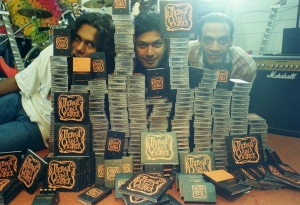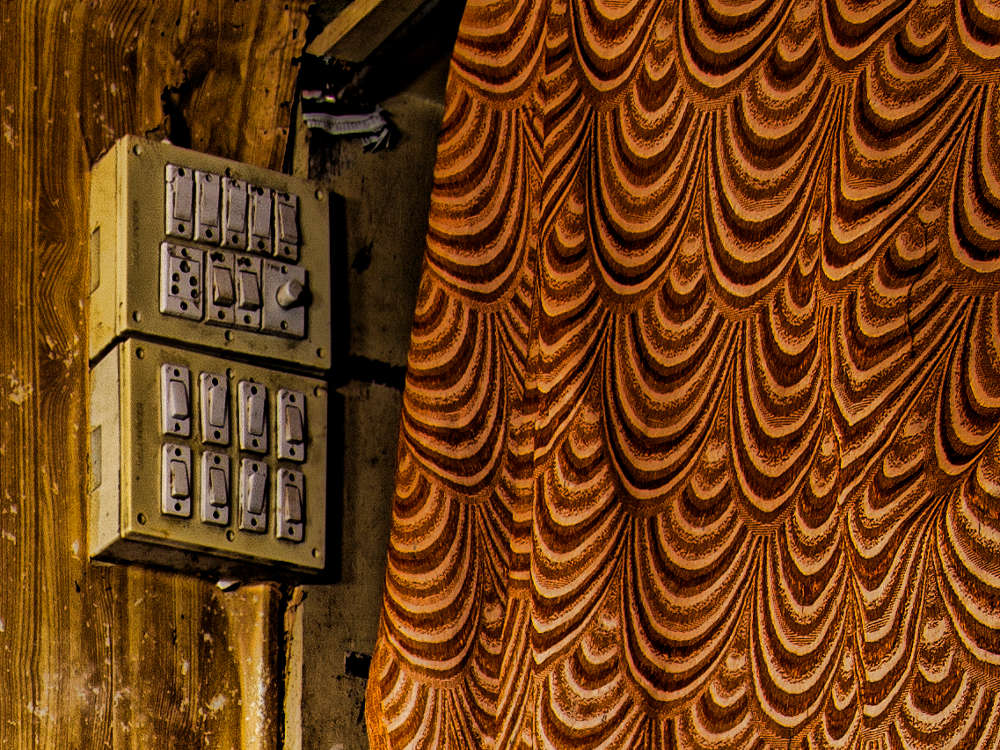Even our most articulate culture commentators tolerate Indian rock music with exasperated indulgence, treating it as the fetish of cultural misfits who overstay in the waiting room between adolescence and oblivion. Having documented an independent rock band for nearly 15 years, I try to set the record straight on that immaculate misconception (thanks to a new friend for that phrase!).
Just as in Mumbai/Bombay (which languishes in its own cultural Truman Show) and Delhi (which appropriates culture as if its only representatives are those that camp in the capital), in Bangalore the underground pop/rock/jazz music movement began in nightclubs (like Boscos and Three Aces) where musicians were paid to perform covers of contemporary hits. When an overactive excise department (in collusion with the moral police) forced these joints to close shop, musicians were left with no stage.
The Music Strip (a brainchild of the late Sunbeam Motha) revived the movement somewhat in the early 1980s, launching bands like Human Bondage. Motha followed it up in the late 1990s with the Night Of the Long Guitar (where I watched the Sarjapur Blues Band for the first time) someplace in the backwoods of Bannerghatta. I was there — quite stoned as was customary then — so I don’t remember the coordinates.
That music movement preserved the exuberance of the Sixties and Seventies and distilled it into an expression of its own making. Refining that expression and beveling its edges into something rich and strange took time. Along the way, initiatives like Freedom Jam gave city bands a soapbox for their voice. But the money still wasn’t there. Organizers of college cultural festivals, which offered the best opportunity to draw crowds, favoured cover bands — mostly from Mumbai and Delhi. Local bands had it rough. The meagre prize money at semi-pro band competitions hosted by collegiate festivals such as Autumn Muse (St John’s Medical College) and Vibrations (Indian Institute of Science) offered incentive for new bands to strut their stuff. Even here, original music wasn’t the highlight. Crowds wanted Bon Jovi or Iron Maiden or Metallica, depending on how high they were, or how low they cared to stoop.
On April 1, 2001, Deep Purple performed in Bangalore. It was the first big appearance of a major Western rock band in Bangalore (Aside: When Roger Waters stopped by on his 2001 “In The Flesh” tour, one of the TAAQ boys got a chance to shake hands with guitarist Snowy White who asked him: “Deep Purple? Were they any good?”). For the first time, a local band — Thermal And A Quarter — was given a chance to open for the British legends. They played a complete set of originals that night, despite shortchanged sound, dimmed lights and no fee.
Two years earlier (in July 1999), TAAQ — then three years old — organized the Potatoe Junkie Concert at the amphitheatre behind Ravindra Kalakshetra. The gate collection went to a charity for soldiers martyred at Kargil. In November that year, the band organized Floodaid, a fundraiser for flood-affected villagers in Orissa. These events marked the first times that an independent band made money playing its own music at a completely self-organized gig.

A very wet Bruce Lee Mani narrowly escapes electrocution at FloodAid, November 1999. A spirited crowd cheered through the torrential rain and held up a sheet of tarpaulin over the band when things got too gusty.
Thermal And A Quarter’s music, to those who came in late, is a commentary on the angst of being Bangalorean in a city racked by change. And change — we know — is never completely desirable despite its inevitability.
My piece on the band’s music, published in today’s Mint Lounge, traces TAAQ’s relevance and rootedness to Bangalore’s cultural milieu, and argues that independent rock music can actually represent the sound of a city, if only one cares to listen.
Excerpt:
A thousand or so 30-something Bangaloreans might remember the date 24 July 1999. That day, Taaq performed at the Potatoe Junkie concert and hauled the city’s underground rock music movement to the surface. The theme song—its title inspired by former US vice-president Dan Quayle’s infamous spelling howler—sneered at the city’s growing obsession with cable television. The band played a 2-hour set consisting mostly of original songs and, after breaking even, donated Rs 15,000 to a relief fund for the families of soldiers martyred during the Kargil war.
Separately, I am also quoted by the Times of India‘s Sandhya Soman in her article “Do Indian musicians make a mark abroad?” published today in the paper’s Crest edition.
Cross posted from Bijoy’s blog



